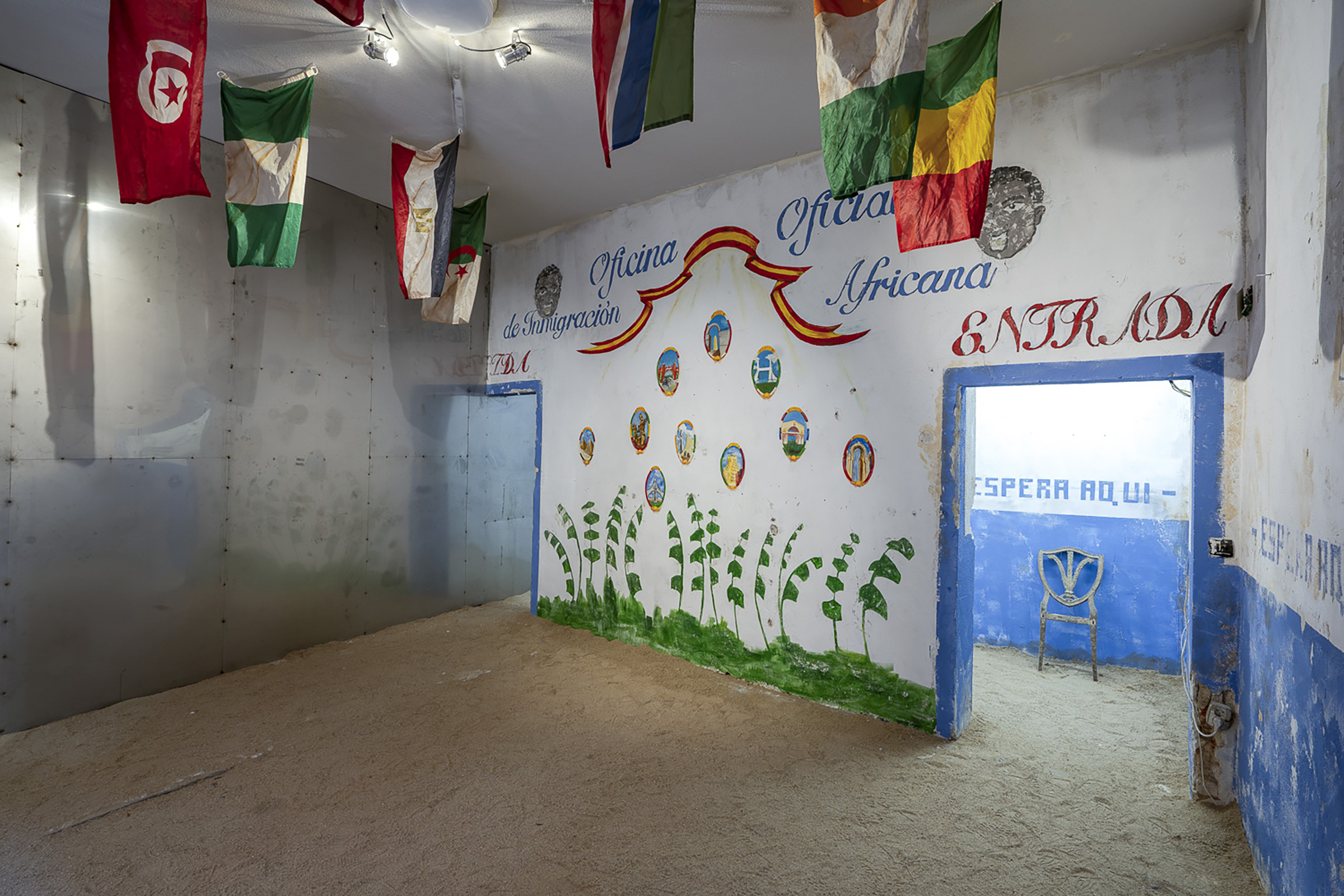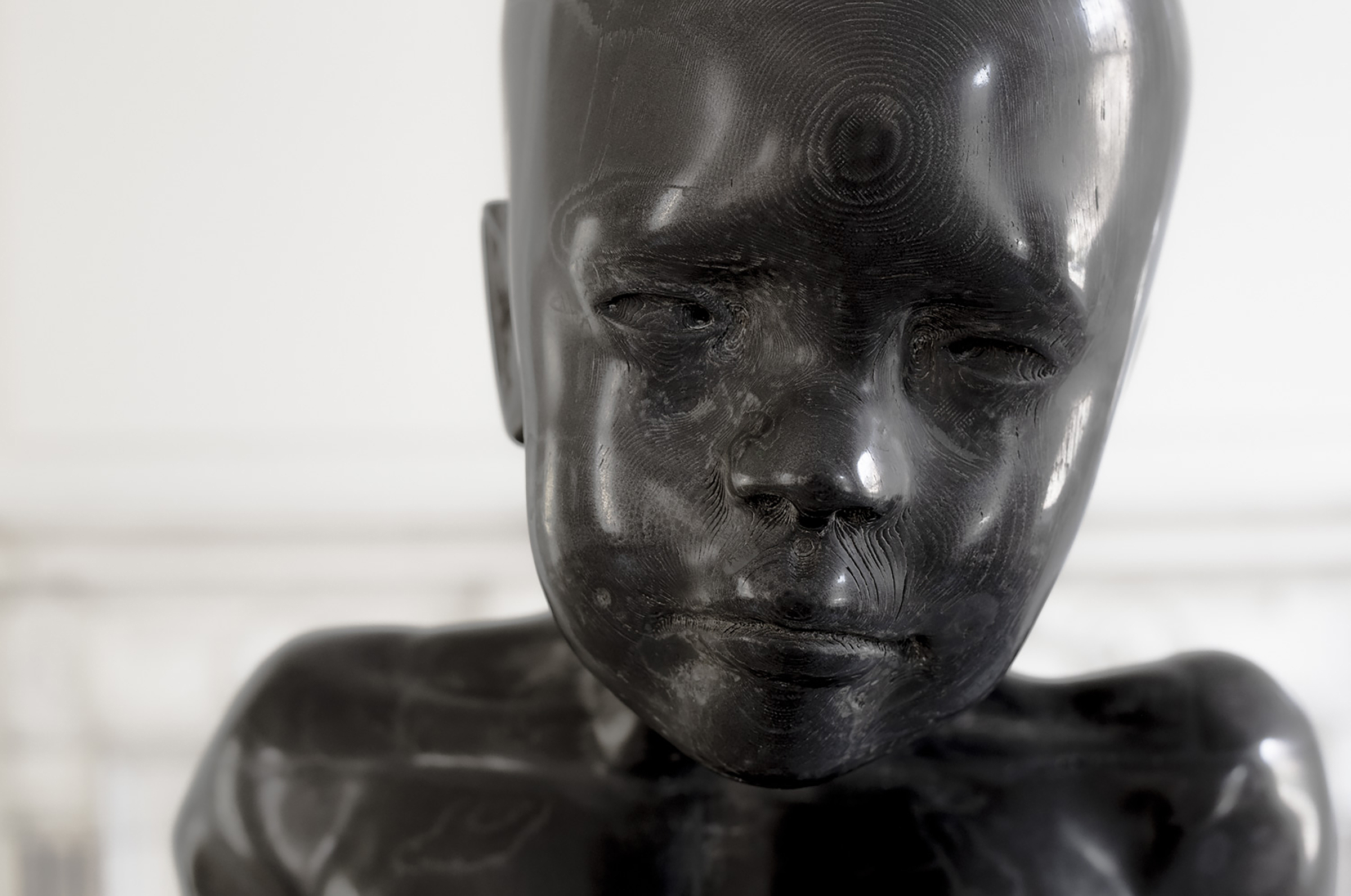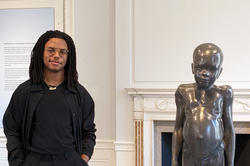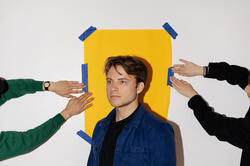Brown|RISD Dual-Degree student Njari Anderson discusses the emotions behind Fountain, his Dorner Prize-winning sculpture now on view at the RISD Museum.
Life After RISD: Checking in with Alum Njari Anderson

Recent Brown | RISD Dual Degree Program grad Njari Anderson BRDD 24 SC is currently working for an arts nonprofit in New York City and building a conceptual studio practice centered on social sculpture and community. A first-generation college student, Anderson found his home at RISD through Project Thrive and the Sculpture department. He earned numerous awards as a student, including the RISD Museum Dorner Prize, a Windgate Lamar Fellowship, and a Brown University Royce Fellowship. Here he shares his thoughts about life after college and lessons learned at RISD that continue to resonate.
Tell us a little bit about your professional practice and what you’re currently working on.
I currently support the visual arts programming for a large arts nonprofit in Queens, NY called the Jamaica Center for Arts & Learning. I view the work as part of my creative practice, and I also maintain a studio practice. I have been developing a lot of web-based conceptual work, and I’m expanding my practice to center more on space-related and site-specific installation work. Last November I had a solo show in Madrid, where I staged a vestige of an African immigration office in the city center.
What made you want to be an artist?
I wanted to be an animator when I was young, because that’s what I recognized as art at the time. I spent a lot of my childhood watching cartoons and thought it was a beautiful form of storytelling. I grew up in south Florida and went to visual arts middle and high schools, so my work and approach to art changed significantly. By the time I started at RISD, I envisioned myself in either Textiles or Painting.


You were a Brown | RISD Dual Degree student. Why did you initially apply to that program?
A bunch of my high school teachers went to RISD. My mom didn’t want me to go to an arts college, but I was admitted to Brown through early decision and applied to the dual degree program because I still wanted a chance to dedicate myself to art. That was one of the best decisions I’ve ever made. RISD is a place where you can try anything and everything. You can really find yourself.
And why did you eventually land on Sculpture as your RISD major?
I needed a department that would nurture how I think and allow me to explore all the things I was interested in: painting, film, fibers, sound, performance. ... I met [faculty member] Ben Jurgensen in Sculpture, and he still is one of the most pivotal influences in my life and arts practice. I really credit him for the way I approach my work and the kind of risks I like to take.
“RISD is a place where you can try anything and everything. You can really find yourself.”
What kinds of support did you receive as a first-generation college student?
I was part of Project Thrive at RISD, and my first RISD friends are from that program. Thrive for me is a lifelong family. I also stay in touch with the stewards of the program: Jonathan Sylvia, Tony Johnson 93 SC, and Spencer Evans. They are incredibly supportive, even now, when I visit Providence, and I always try to say hello. They bring in visiting artists and alums and do one-on-one counseling and career development. It carves out a space where you feel like you belong on campus.
Is there a particular assignment or studio experience that you still carry with you today?
Ben Jurgensen does this “1% for art” project based on funding models for commissioning public works, and that was the catalyst for all the work I’m doing now. It was about how to propose and plan, design and develop a project from the ground up, from sketches to budgeting to putting together a grant proposal. My Dorner Prize proposal emerged from that project.


Is there one thing you’ve made or are in the process of making that you feel is most representative of your work?
I’m ideating a piece right now titled Hail that will involve a decommissioned police car—a Ford Crown Victoria. I want to treat the entire exterior like a Trinidadian steel pan drum, so it becomes this hammered, divoted surface that viewers are invited to play with mallets. My work usually starts with a single gesture or poetic phrase, in this case “What is the sound of resistance in a higher octave?” Imagine 20 people circling this thing and creating a cacophony!
What role would you say artists play in making a better future?
I think the artist’s role is to create opportunities for dialogue, to drive necessary conversations. The artist is a social, cultural, and political barometer that prefigures where our society should be going. And art is inherently optimistic. When you make, you believe in the possibility of something more. As long as artists are making, there is always hope for something better.
Life After RISD is an ongoing series featuring alumni making outsized impact in culture and industry. Stay tuned for more from our graduates on how RISD has helped to shape their practices and the way they engage with the world.
interview by Simone Solondz / portrait by JaLeel Marques Porcha 23 PH/SC
November 3, 2025


